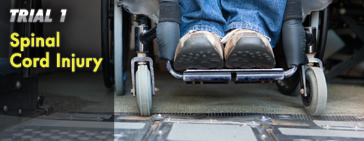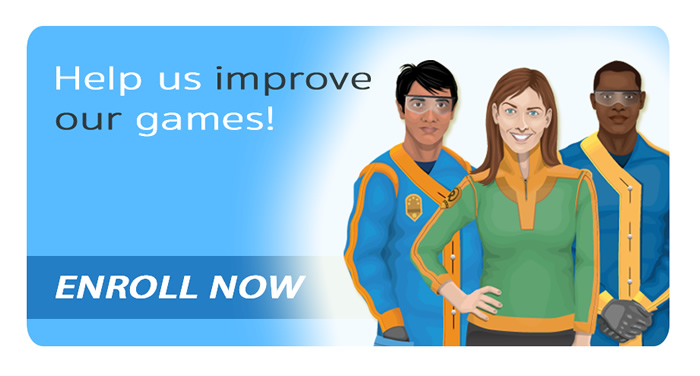This synopsis for Trial 1: Spinal Cord Injury is provided as an overview for TEACHERS. We advise teachers NOT to
hand this out to the students prior to playing the adventure since much of the suspense will be eliminated.

Synopsis [ 45 KB pdf ]
Players begin the Phase 2 clinical trial by learning their training goal is to explore the clinical trials process through working with three clinical trial experts: a Clinical Trials Training Director, a Principal Investigator, and a Coordinator.
TRAINING DIRECTOR'S OFFICE:
The Training Director greets the player and instructs him/her to pick up the tablet. Players learn what a clinical trial is, then answer questions in a notebook on their tablet. Throughout the simulation, players are prompted to answer open-ended and multiple choice questions in the notebook. At the end of the simulation the contents of the notebook can be saved to the player's computer desktop as a PDF for printing.
PRINCIPAL INVESTIGATOR'S OFFICE:
The Principal Investigator (PI) reveals she is a Biomedical Engineer who is interested in how electrical devices can be used to treat people with spinal cord injuries. Quadriplegia and paraplegia are explained and a video of a patient undergoing occupational hand therapy is presented to demonstrate that occupational therapy is the standard treatment for spinal cord injury.
The player learns about functional electrical stimulation (FES) therapy and explores how an electrical device can be used to induce different finger movements by placing electrodes in different positions on an arm. This leads to the PI stating her research question for the clinical trial, which the player must translate into a research hypothesis.
The player must also help the PI set up the protocol, or study plan, for the Phase 2 clinical trial by establishing inclusion/exclusion criteria, number of groups needed to test the hypothesis, appropriate treatments for each group, and how the effectiveness of the treatment will be assessed.
COORDINATOR'S OFFICE:
After finishing the activities with the PI, the player is introduced to the Coordinator and his role in a clinical trial. The Coordinator requires assistance in recruiting potential clinical trial participants through matching patients in a database to the inclusion/exclusion criteria established with the PI.
The player must also help the Coordinator conduct the informed consent process with a potential participant to determine if she fully understands the clinical trial and should be allowed to participate.
TRAINING DIRECTOR'S OFFICE:
The player reports back to the Training Director's Office to review the results of the clinical trial. Players watch a video of someone before and after FES therapy and then proceed to analyze the data from the clinical trial. The player must determine if the data supports the hypothesis. Based on what they have learned, players have the opportunity to revise their open-ended responses in the notebook. The simulation ends with the knowledge that FES therapy is ready to move to Phase 3 for further testing.









